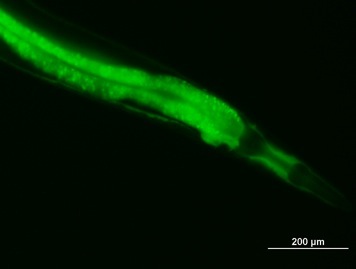
Alfred L. Fisher MD PhD
Assistant Professor
University of Pittsburgh
Department of Medicine
Division of Geriatric Medicine
Dr. Fisher received his BS degree in Biochemistry from Loyola Marymount University and his MD and PhD degrees from Cornell University. He trained in Internal Medicine and Geriatric Medicine at UCSF before starting a post-doc with Dr. Gordon Lithgow at the Buck Institute. He was recruited to the University of Pittsburgh in 2005.
His lab is interesting in aging and how the aging process contributes to age-related diseases. Research in his lab uses the nematode C. elegans as a model system for these studies, and experiments include techniques ranging from classical genetics to microarrays to proteomic analysis of protein complexes. Currently, the lab is studying how the daf-12 nuclear hormone receptor and its target genes modify the aging of this animal. The lab also has a developing interest in how aging contributes to sarcopenia and impaired mobility in aged animals. These two problems are also seen in older people and contribute significantly to functional impairment and dependency. These studies are aided by the use of daf-2 mutants which demonstrate not only enhanced longevity but also relative protection from sarcopenia and mobility declines.
Recent Publications:
- A.L. Fisher. 2004. Of worms and women: sarcopenia and its role in disability and mortality. J Amer Ger Soc. 52: 1185-1190.
- M.S. Gill, J.M. Held, A.L. Fisher, B.W. Gibson, and G.J. Lithgow. 2004. Lipophilic regulator of a developmental switch in Caenorhabditis elegans. Aging Cell 3:413-421.
- A.L. Fisher. 2005. Just what defines frailty? J Amer Ger Soc. 53:2229-30.
- A.L. Fisher. Models of Sarcopenia. In Handbook of Models for Human Aging. Conn, Ed. Elsevier, Burlington. 2006.
- A.L. Fisher and G.J. Lithgow. 2006. The nuclear hormone receptor DAF-12 has opposing effects on C. elegans lifespan and regulates genes repressed in multiple long-lived worms. Aging Cell 5: 127-138.
- J.M. Held, M.P. White, A.L. Fisher, B.W. Gibson, G.J. Lithgow, and M.S. Gill. 2006. DAF-12-dependent rescue of dauer formation in C. elegans by 25S-cholestenoic acid. Aging Cell. 5: 283-291.
- A.L. Fisher, K.E. Page, G.J. Lithgow, and L. Nash. The C. elegans K10C2.4 gene encodes a member of the fumarylacetoacetate hydrolase Family. A C. elegans model of type I tyrosinemia. Submitted.
- Ferguson AA, Springer MG, and Fisher AL. skn-1 dependent and independent regulation of aip-1 expression following metabolic stress in C. elegans. Mol Cell Bio 2010; 30(11):2651-67.
- Powolny AA, Singh SV, Melov S, Hubbard A, and Fisher AL. The garlic constituent diallyl trisulfide increases the lifespan of C. elegans via skn-1 activation. Exp. Gerontology 2011; 46(6):441-52.
- Kashyap L, Perera S, and Fisher AL. Identification of novel genes involved in sarcopenia through RNAi screening in C. elegans. J. Gerontology. (In press).
- Ferguson AA, Cai L, Kashyap L, and Fisher AL. Improved vectors for selection of transgenic Caenorhabditis elegans. Methods in Mol Bio. (In press).
- Hochbaum D, Zhang Y, Stuckenholz C, Labhart P, Alexiadis V, Martin R, Knolker HJ, and Fisher AL. DAF-12 regulates a connected network of genes to ensure robust developmental decisions. PLOS Genetics 2011; 7(7): e1002179.
- Cai L, Phong BL, Fisher AL, and Wang Z. Regulation of fertility, survival, and cuticle collagen function by the C. elegans eaf-1 and ell-1 genes. J. Biol. Chem. (In press).
Fisher Lab Members:
Annabel Ferguson, Research Technician
Scott Keith, Research Technician
